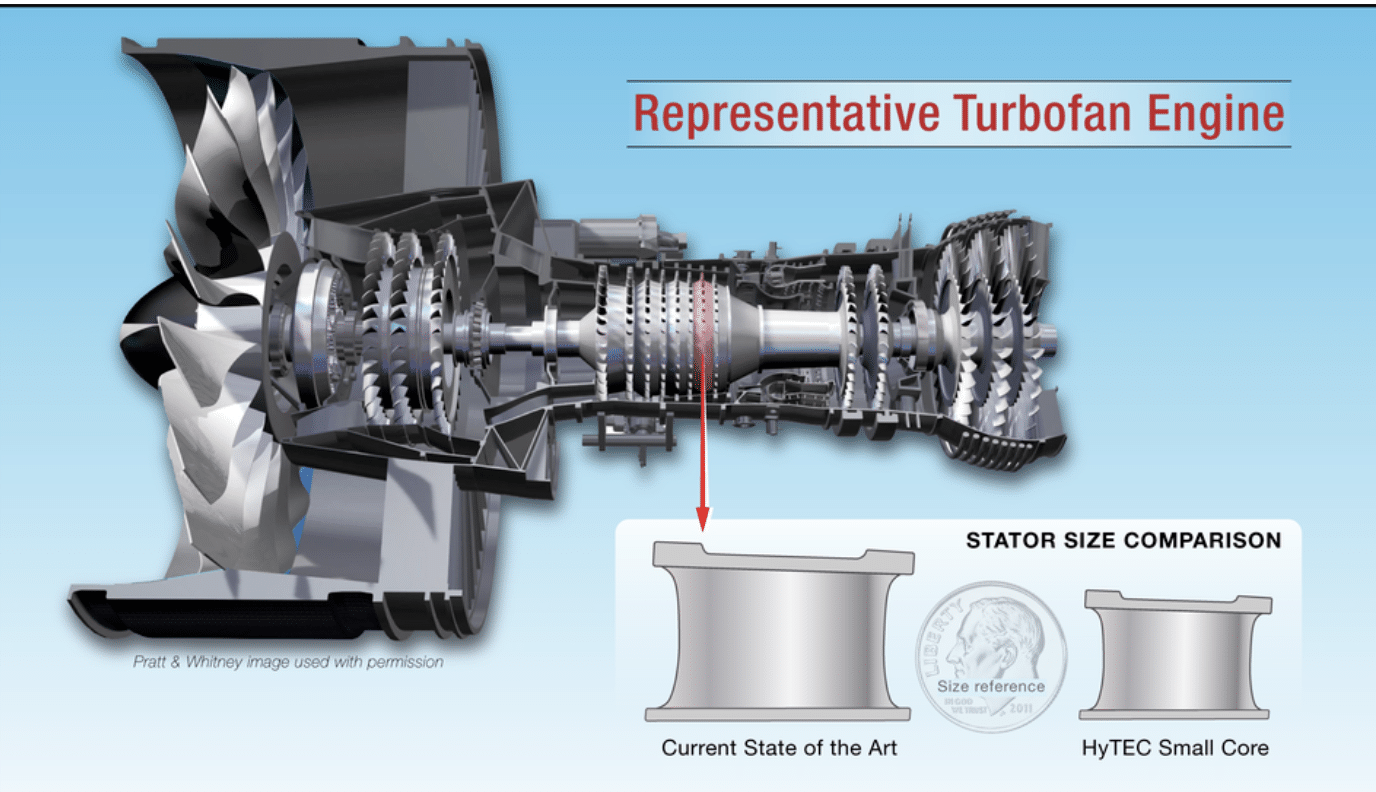Pratt & Whitney has been selected by NASA to develop advanced high pressure turbine technologies that will reduce fuel consumption and emissions for next generation single-aisle aircraft. The Hybrid Thermally Efficient Core (HyTEC) project is part of NASA’s Sustainable Flight National Partnership, which is intended to enable breakthrough innovations and help accomplish the aviation industry’s ambitious goals to significantly reduce CO2 emissions by 2050.
Pratt & Whitney will leverage its recently opened ceramic matrix composites (CMC) center of excellence in Carlsbad, California, and collaborate with Raytheon Technologies Research Center on the project. The technologies targeted by HyTEC include next generation CMC materials capable of operating at higher temperatures than current CMCs, environmental barrier coatings, and advanced cooling and aerodynamic approaches that will enable new component designs and efficiencies. By increasing the thermal efficiency of the high-pressure turbine, these technologies will contribute to greater fuel efficiency in future gas turbine propulsion systems.
“We are delighted to work with NASA on developing the next generation of more fuel efficient and low emission aircraft technologies,” said Geoff Hunt, senior vice president, Engineering and Technology, at Pratt & Whitney. “Advanced materials such as CMC vanes will enable greater thermal efficiencies and combined with today’s propulsive efficiency of the GTF engine architecture, will help make future aircraft propulsion systems even more sustainable.”
Collaboration between Pratt & Whitney and NASA has already led to several key advances in sustainable propulsion technology in recent decades, including low-pressure fan, low-emissions combustor and high-performance hot section. These collaborations have a vital role to play towards developing and maturing technologies that will ultimately help make aviation more sustainable environmentally and economically.
